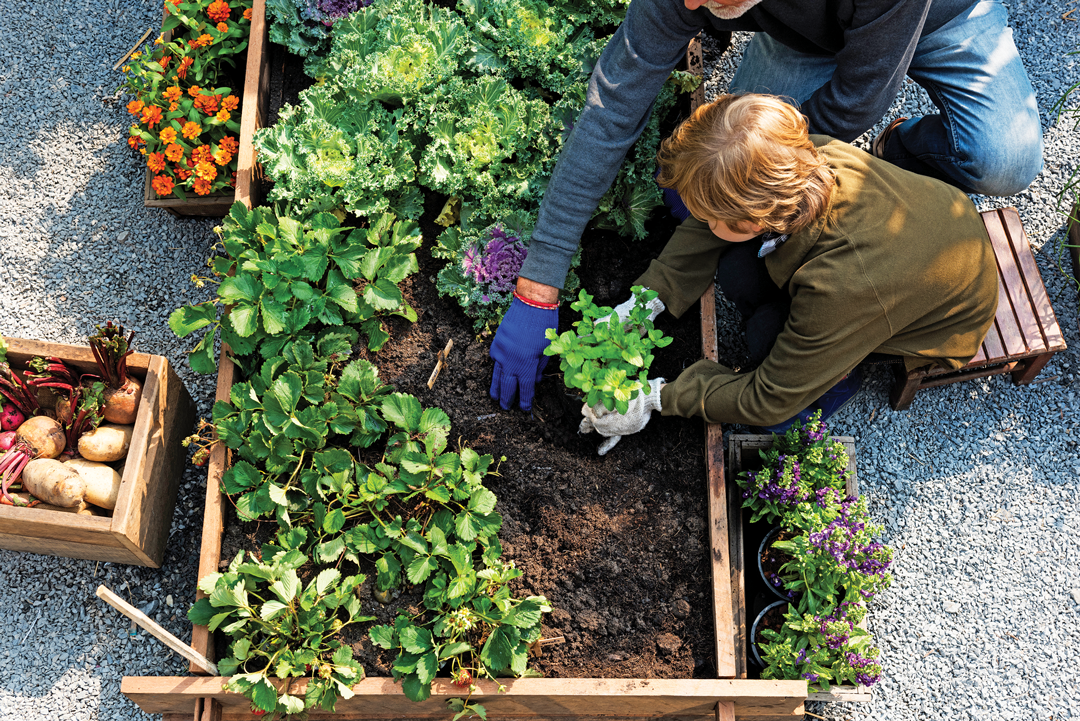The Most Effective Gardening Plants for Low-Maintenance and High Reward
Understanding the Different Kinds of Gardening and Just How They Contribute to a Healthier Way Of Living and Atmosphere
Benefits of Veggie Horticulture
Lots of individuals are increasingly identifying the myriad advantages of veggie horticulture as a crucial element of a much healthier way of living. Participating in veggie gardening provides many physical wellness benefits, including raised physical task, which enhances cardio health and advertises general health and fitness. The act of growing, weeding, and harvesting calls for movement and can assist battle less active behaviors, adding to weight management and improved muscle mass tone.
Moreover, growing one's own veggies substantially enhances dietary quality. Domestic produce is often fresher and more nutrient-dense compared to store-bought options, as it can be eaten shortly after harvest. This ease of access encourages a higher consumption of vegetables and fruits, which are necessary for preventing persistent conditions.
In addition, veggie horticulture cultivates psychological health by offering a therapeutic electrical outlet for tension relief and leisure. Collectively, these advantages highlight the relevance of veggie horticulture as a foundation of a much healthier lifestyle.
Exploring Flower Horticulture

Along with visual benefits, blossom gardening supports neighborhood communities. Numerous flowering plants draw in pollinators, such as bees and butterflies, which are crucial for preserving biodiversity. The visibility of varied vegetation can additionally improve soil health, as numerous plants add to nutrition biking and improve soil structure.
In addition, flowers can play a considerable duty in promoting lasting methods. Lots of gardeners select indigenous or drought-resistant types, which call for much less water and very little chemical inputs. This technique not just benefits the environment yet likewise motivates accountable horticulture practices.
Ultimately, blossom horticulture works as a crucial element of an all natural horticulture approach. Gardening. By growing charm and supporting local communities, it harmonizes with vegetable horticulture and emphasizes the significance of nurturing both our physical and psychological wellness via nature
Container Horticulture Advantages
Container gardening offers various benefits that make it an enticing option for both newbie and skilled gardeners. One of the key benefits is its versatility; containers can be put on patios, balconies, or even indoors, enabling horticulture precede with limited ground gain access to. This adaptability makes it possible for people in metropolitan atmospheres or those with little lawns to cultivate plants properly.
Additionally, container horticulture gives enhanced control over soil high quality and dampness degrees. Garden enthusiasts can choose certain soil mixes to enhance plant health and wellness and alleviate problems like weeds and insects. The wheelchair of containers also permits simple moving to optimize look at this now sunlight direct exposure or safeguard plants from inclement weather.
Additionally, container gardens can be cosmetically pleasing, offering a chance for creative thinking in layout. Gardening. They can work as decorative components that boost outside or indoor spaces while promoting biodiversity by attracting pollinators
Finally, container horticulture can add to a healthier way of living by urging exercise, as it often entails training, growing, and maintaining plants. look at more info Generally, the benefits of container horticulture make it an easily accessible and rewarding practice for those looking for to improve their way of living and atmosphere.
The Increase of Vertical Horticulture
As city rooms come to be increasingly crowded, the fad of upright horticulture has actually taken off, enabling people to maximize their horticulture potential in limited locations. This innovative approach entails expanding plants in vertical frameworks, such as wall-mounted planters, trellises, or specialized upright yard systems. The allure of vertical gardening exists not just in its effective use of room but also in its aesthetic contribution to urban atmospheres, transforming bare wall surfaces right into lavish eco-friendly landscapes.
Upright yards can be mounted in homes, porches, and area rooms, supplying a platform for growing a variety of plants, including herbs, vegetables, and decorative blossoms. This approach motivates biodiversity and can improve air top quality by filtering pollutants while advertising a link to nature in densely populated locations. In addition, vertical gardening offers practical advantages, such as boosted return per square foot, making it an attractive option for city gardeners looking for to grow their very own food.

Lasting Practices in Gardening
Embracing lasting methods in horticulture is vital for advertising ecological wellness and making sure the feasibility of our natural deposits. Sustainable gardening strategies concentrate on reducing environmental influence, preserving water, and promoting biodiversity. By carrying out practices such as organic horticulture, gardeners can minimize using synthetic plant foods and chemicals, which can hurt neighborhood ecological communities.
Buddy growing is an additional reliable sustainable technique, where specific plants are expanded together to boost growth and prevent bugs normally. In addition, making use of native plants in landscape design supports regional wildlife and needs less upkeep, as they are naturally adjusted to the regional climate and dirt conditions.
Water preservation techniques, such as rainwater harvesting and drip watering, assistance to efficiently take care of water resources, therefore decreasing waste. Composting natural waste not just improves the dirt yet also lowers landfill contributions, advertising a circular economy.
Lastly, practicing crop turning and cover cropping improves soil wellness and minimizes the threat of pest problems. By integrating these sustainable methods, gardeners can create resilient ecosystems that contribute to a healthier way of living while securing the environment for future generations.
Conclusion

In verdict, the diverse methods of gardening, consisting of veggie, flower, container, and vertical gardening, jointly promote a much healthier lifestyle and boost environmental sustainability. Each kind offers unique advantages, from offering fresh produce and drawing in pollinators to optimizing restricted areas and encouraging biodiversity. By fostering sustainable practices, these horticulture approaches not only add to specific well-being but likewise sustain more comprehensive environmental conservation initiatives, ultimately lowering dependence on business agriculture and enhancing community resilience.